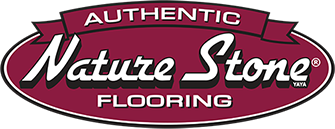3 Hidden Costs of Polyaspartic Epoxy Flooring
Why Polyaspartic Epoxy Costs More Than You Think
If you’re considering polyaspartic epoxy flooring for your next home renovation or home remodeling, have you thought about the hidden costs that might come along with it? It might surprise you to learn that the costs often go far beyond the initial installation price.
Let’s discuss three hidden fees of polyaspartic epoxy flooring that you might not have considered, fees that might make you change your mind about using this trendy new product.
1. Prep work:
The first thing to be aware of is the cost of preparation. Before the epoxy is applied, the surface must be completely clean and free of debris, and areas around doorways, steps, columns, and other features will require extra prep. If the surface is not properly prepared, the epoxy will not adhere correctly, which will lead to peeling and cracking. This is an intensive process that adds time, materials, and labor to the initial per-square-foot estimate you were probably given.
2. Removal and repair:
This is a factor many home and business owners overlook, in part because they’re told that this type of flooring lasts longer than it actually does. If the floor is damaged or needs to be replaced for any reason, it can be extremely costly to remove and repair it. The removal process is time-consuming and expensive, and spot repairs to address peeling, cracking, bubbling and other common issues add up quickly. Plus, depending on the size of the area being repaired, the need to remove and replace the flooring may mean shutting down your business for a few days or having to find another place to live while the work is completed.
3. Maintenance:
If you think that once your flooring is installed you will be done shelling out money for it, think again. Polyaspartic epoxy flooring requires a lot of ongoing maintenance. Regular cleaning with specialized cleaners is necessary to keep the surface looking its best – it can become yellowed and pitted otherwise – and you will need to ensure the topcoat is periodically reapplied to ensure the flooring remains sealed and protected. These expenses add up, and they never end for as long as you have the floor.
The bottom line is simple: your initial estimate doesn’t tell the whole story, and you’re going to spend a lot more than you think when you choose polyaspartic epoxy flooring.
So what do you use instead?
Upgrade to Nature Stone® flooring. For basements, garages, patios, and work areas, the benefits of Nature Stone® make these areas usable in ways polyaspartic epoxy can’t.
First, Nature Stone® has a high “R-value,” which is a measurement of a building material’s ability to conduct heat and cold. A higher value means better insulation.
Second, Nature Stone® helps dampen noise, making it ideal for home gyms and workshops, playrooms, and more.
In garages and workshops, Nature Stone®’s proprietary slip-resistant, spill-resistant technology eliminates puddles and slipping hazards, a huge upgrade over highly slippery polyaspartic epoxy.
In basements, mold and mildew growth is inhibited thanks to that same technology, leading to a cleaner appearance and fresher air.
And in both areas, Nature Stone® helps insulate the space from temperature extremes, allowing you to be more comfortable.
All of this is backed by the most comprehensive warranty in the industry. No strings. No hidden costs. No surprises. Just 10 years of pure protection for you and your investment into your home.
You won’t find any other flooring manufacturer or installer who will do that.
Because we believe it’s not just a floor, it’s Nature Stone®.


